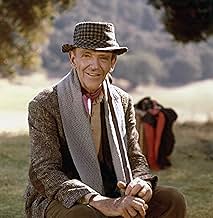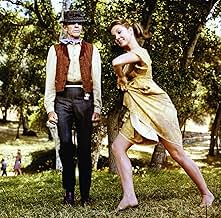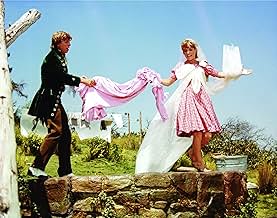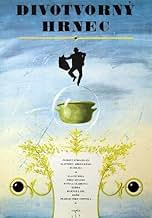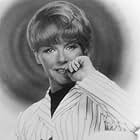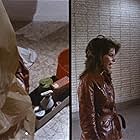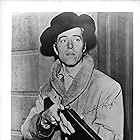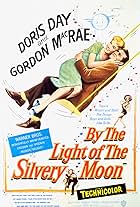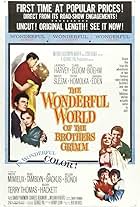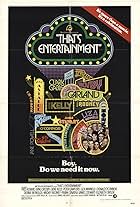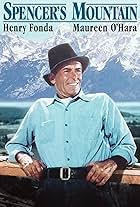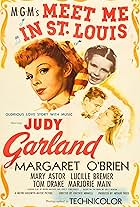IMDb RATING
6.1/10
4.3K
YOUR RATING
An Irish immigrant and his daughter move into a town in the American South with a magical piece of gold that will change people's lives, including a struggling farmer and African American ci... Read allAn Irish immigrant and his daughter move into a town in the American South with a magical piece of gold that will change people's lives, including a struggling farmer and African American citizens threatened by a bigoted politician.An Irish immigrant and his daughter move into a town in the American South with a magical piece of gold that will change people's lives, including a struggling farmer and African American citizens threatened by a bigoted politician.
- Nominated for 2 Oscars
- 1 win & 9 nominations total
Brenda Arnau
- Sharecropper 'Necessity'
- (uncredited)
Charles Carter
- Sharecropper
- (uncredited)
Sterling Clark
- Sharecropper
- (uncredited)
Robert Cleaves
- Geologist
- (uncredited)
Robert Cole
- Sharecropper
- (uncredited)
Willie Covan
- Sharecropper
- (uncredited)
Evelyn Dutton
- Sharecropper
- (uncredited)
Storyline
Did you know
- TriviaMany, including Fred Astaire, blamed director Francis Ford Coppola for cutting off Astaire's feet during filming of his dancing scenes, but it was Warner Bros. who decided, after the filming had been completed in 35mm, to convert the film to the wider 70mm and promote it as a "reserved-ticket roadshow attraction." This was achieved by cropping off the tops and bottoms of the film frame, including some shots of Astaire's footwork.
- GoofsIn the song "Old Devil Moon" as Woody and Sharon dance through the stream, Woody has bare feet and his hands are in Sharon's. In the next shot, he has his shoes on, and it even looks as if his trousers are dry.
- Crazy creditsintroducing Barbara Hancock as "Susan the Silent"
- Alternate versionsFilmed in 35mm, Warners decided afterwards to promote it as a "reserved-ticket roadshow attraction" and converted it to 70mm, creating a wider-screen aspect ratio by cropping away the tops and bottoms of the images, and cropping away Fred Astaire's feet during some of his dance scenes. Restored versions show the original aspect ratio.
- ConnectionsEdited into The Kid Stays in the Picture (2002)
- SoundtracksLook To The Rainbow / How Are Things In Glocca Morra?
(1946) (uncredited)
(Main Title)
Played during the opening credits
Lyrics by E.Y. Harburg
Music by Burton Lane
Sung by Petula Clark ("Rainbow") and played by the Warner Bros.
Orchestra ("Glocca Morra") conducted by Ray Heindorf
Featured review
Opening on Broadway in 1947 with music by Burton Lane and lyrics by E.Y. "Yip" Harburg (who wrote the lyrics for 1939's THE WIZARD OF OZ), FINIAN'S RAINBOW was an unexpected smash that generated one pop classic after another--"How Are Things In Glocca Morra?," "Old Devil Moon," and "Look To The Rainbow" to name but three. But when talk turned to a film version, not a single studio in Hollywood would touch it: although the story was fantasy, it was also extremely satirical, contained elements that had a decidedly socialist edge, and made one of the most wickedly funny statements on racism seen up to that time. With Hollywood operating under the production code and the nation drifting into the communist paranoia of the 1950s, the whole thing was impossibly hot. And so FINIAN'S RAINBOW remained off the screen for over twenty years... until 1968, when a sudden splash of popular screen musicals prompted Warner Brothers to bankroll it.
The plot is deliberately ridiculous, and finds Irishman Finian McLonergan (Fred Astaire) and his long suffering daughter Sharon (Petula Clark) in Tennessee, where Finian plans to bury a crock of gold stolen from a leprechaun (Tommy Steele) on the theory that the land around Fort Knox will make the gold grow. But things take an unexpected turn when they arrive in Rainbow Valley, where they encounter a commune of black and white tobacco sharecroppers doing battle with a viciously bigoted Senator (Keenan Wynn.) And when daughter Sharon is outraged by the Senator's racism and happens to be standing by the hidden crock of gold--she accidentally "wishes" the Senator black! Unlike the 1947 stage show, the big screen version of FINIAN'S RAINBOW tanked at the box office, and it is little wonder: both producers and then-novice director Francis Ford Coppola made a host of very basic mistakes with the material, the first of which was not keeping the film within its original 1940s context; they instead give it a 'contemporary' tone that not only undercuts the fanciful storyline but makes many of the story's elements seem heavy-handed. In the process they manage to blunt the edge of the original in a very significant sort of way. There are also a number of cinematic problems with the movie, which feels awkwardly filmed and still more awkwardly edited, and the film visibly shifts between outdoor set-ups and studio soundstage sets in a very uncomfortable sort of way.
All of that said, there is still a great deal to enjoy in FINIAN'S RAINBOW--the aforementioned score for one and the truly memorable performances for another. Astaire is timeless, Tommy Steele almost walks away with the show, Keegan Wynn (in spite of some rather ill-advised make-up) gives a memorable performance as the bigoted Senator, and Al Freeman Jr. is absolutely hilarious in the sequence where he applies for the job of butler in the Senator's home--I laugh just thinking about it! But the real revelation here is Petula Clark. Best known as a pop singer, Clark is perfection as Sharon McLonergan; it is a tremendous pity that she was never again so well-cast on screen. And together they manage to gloss over most of the film's weaknesses; if you're a musical fan, you're likely to enjoy it.
Gary F. Taylor, aka GFT, Amazon Reviewer
The plot is deliberately ridiculous, and finds Irishman Finian McLonergan (Fred Astaire) and his long suffering daughter Sharon (Petula Clark) in Tennessee, where Finian plans to bury a crock of gold stolen from a leprechaun (Tommy Steele) on the theory that the land around Fort Knox will make the gold grow. But things take an unexpected turn when they arrive in Rainbow Valley, where they encounter a commune of black and white tobacco sharecroppers doing battle with a viciously bigoted Senator (Keenan Wynn.) And when daughter Sharon is outraged by the Senator's racism and happens to be standing by the hidden crock of gold--she accidentally "wishes" the Senator black! Unlike the 1947 stage show, the big screen version of FINIAN'S RAINBOW tanked at the box office, and it is little wonder: both producers and then-novice director Francis Ford Coppola made a host of very basic mistakes with the material, the first of which was not keeping the film within its original 1940s context; they instead give it a 'contemporary' tone that not only undercuts the fanciful storyline but makes many of the story's elements seem heavy-handed. In the process they manage to blunt the edge of the original in a very significant sort of way. There are also a number of cinematic problems with the movie, which feels awkwardly filmed and still more awkwardly edited, and the film visibly shifts between outdoor set-ups and studio soundstage sets in a very uncomfortable sort of way.
All of that said, there is still a great deal to enjoy in FINIAN'S RAINBOW--the aforementioned score for one and the truly memorable performances for another. Astaire is timeless, Tommy Steele almost walks away with the show, Keegan Wynn (in spite of some rather ill-advised make-up) gives a memorable performance as the bigoted Senator, and Al Freeman Jr. is absolutely hilarious in the sequence where he applies for the job of butler in the Senator's home--I laugh just thinking about it! But the real revelation here is Petula Clark. Best known as a pop singer, Clark is perfection as Sharon McLonergan; it is a tremendous pity that she was never again so well-cast on screen. And together they manage to gloss over most of the film's weaknesses; if you're a musical fan, you're likely to enjoy it.
Gary F. Taylor, aka GFT, Amazon Reviewer
- How long is Finian's Rainbow?Powered by Alexa
Details
Box office
- Budget
- $3,500,000 (estimated)
- Runtime2 hours 21 minutes
- Aspect ratio
- 2.39 : 1
Contribute to this page
Suggest an edit or add missing content



